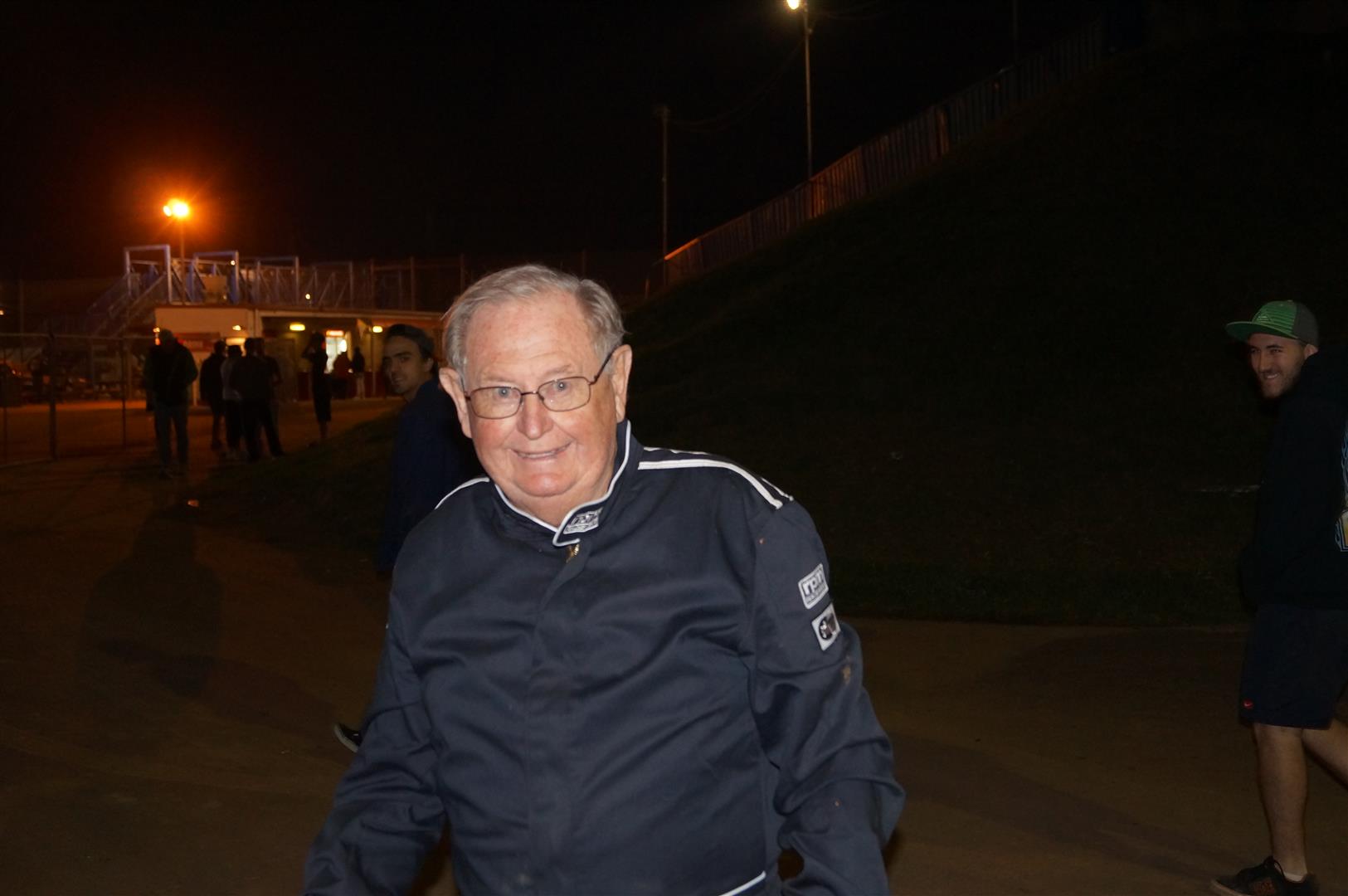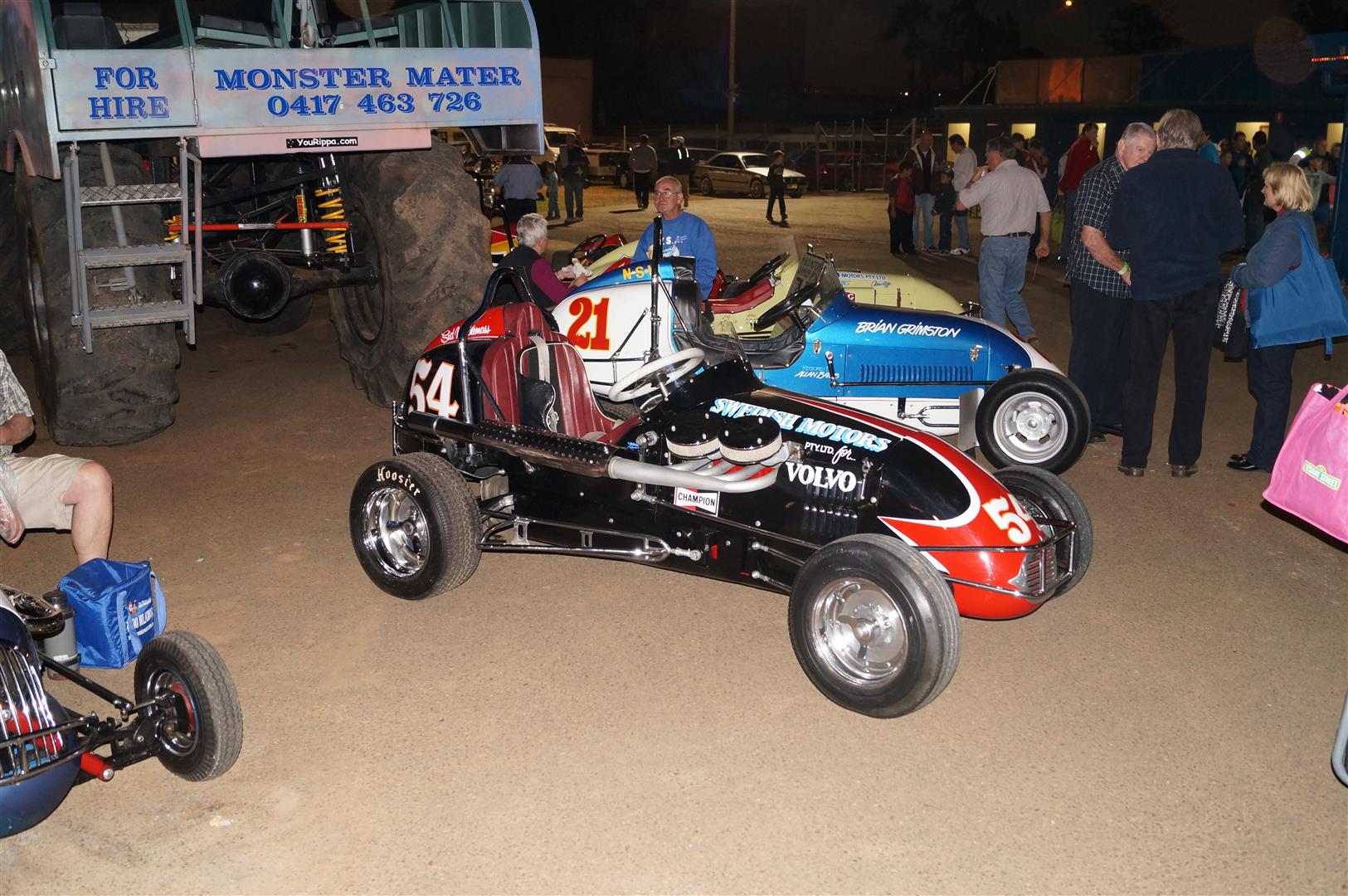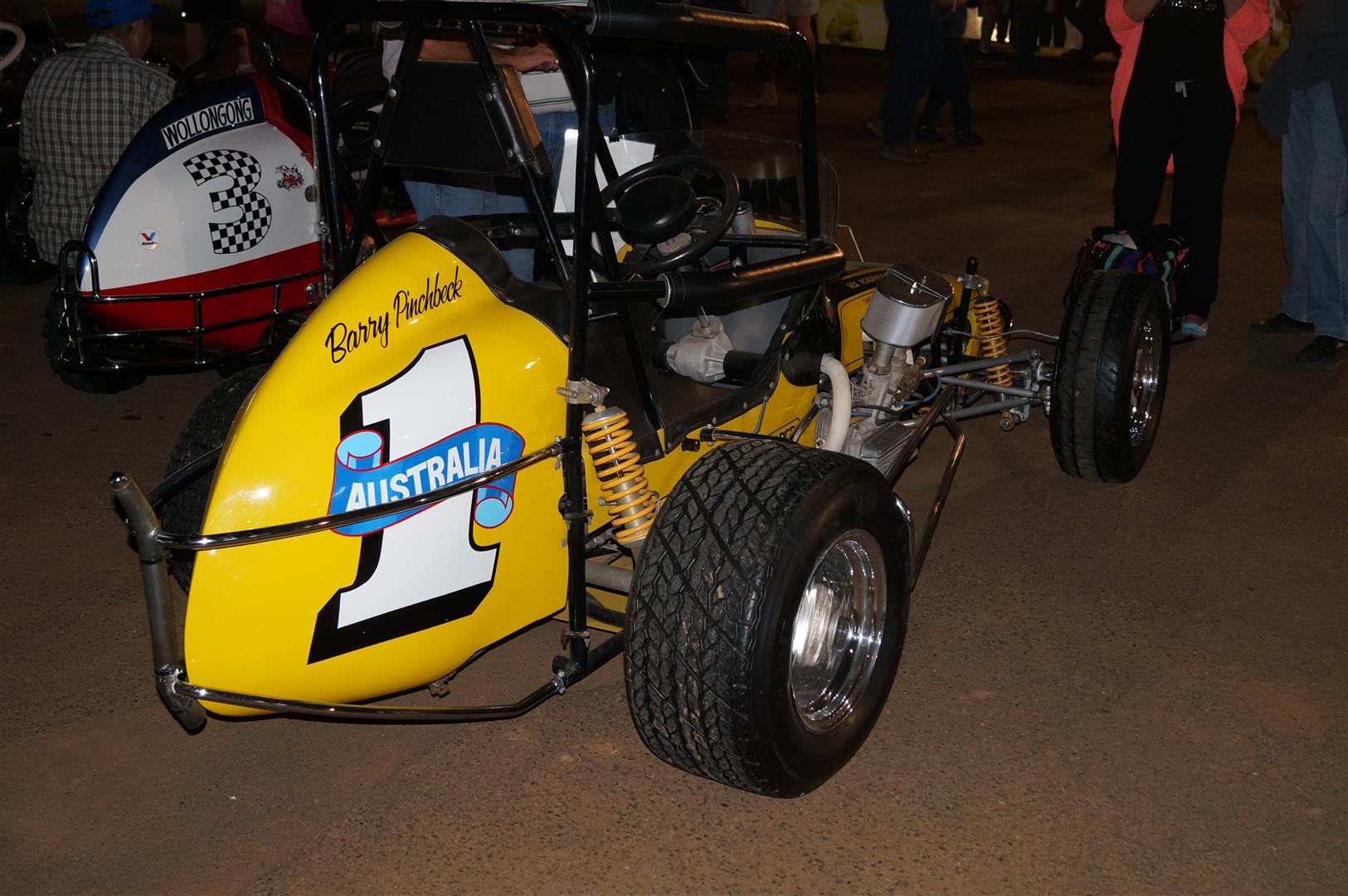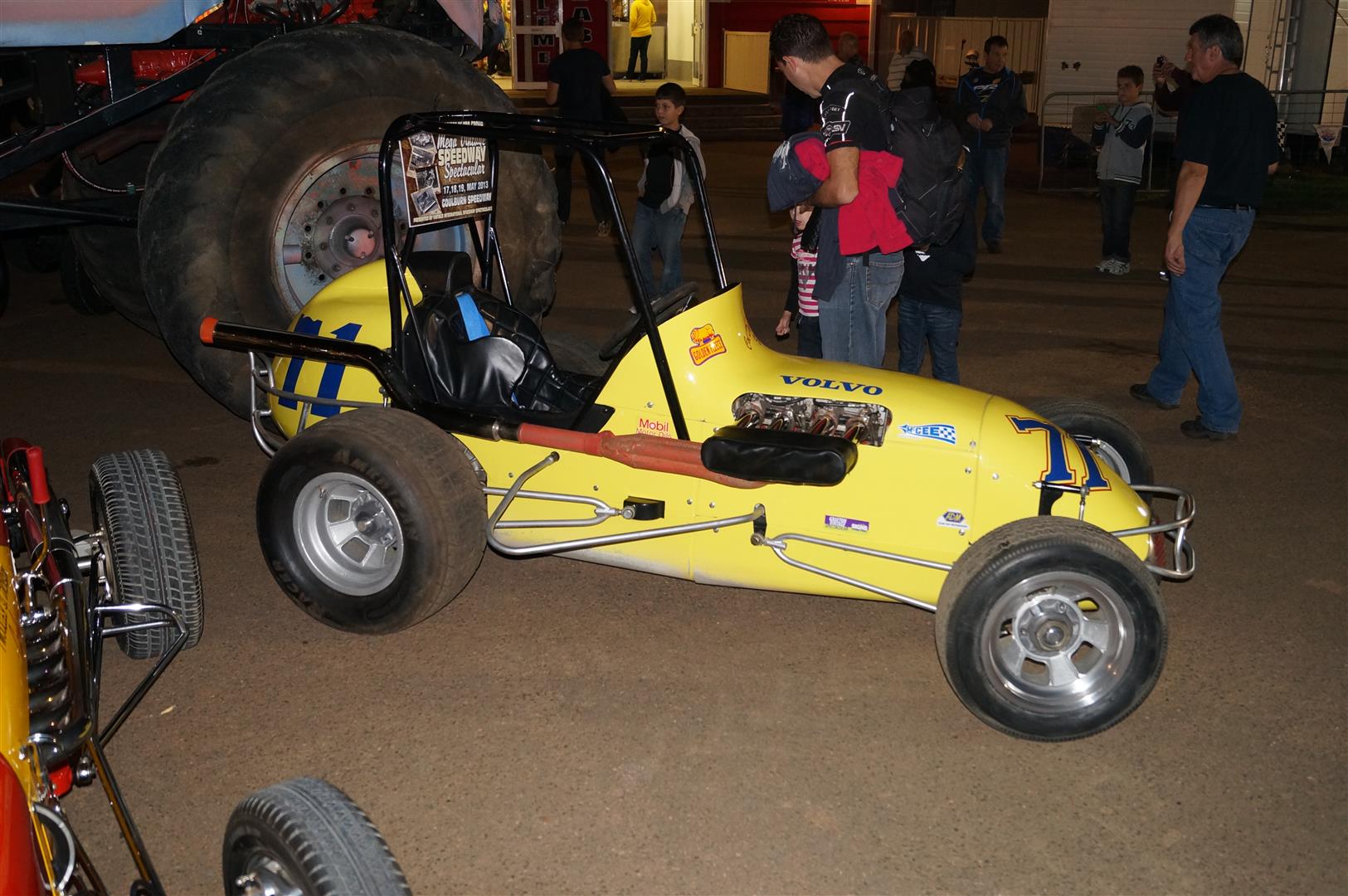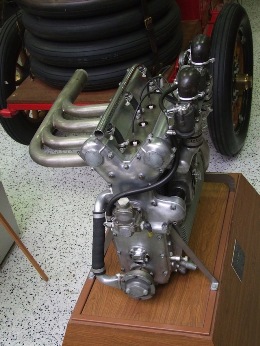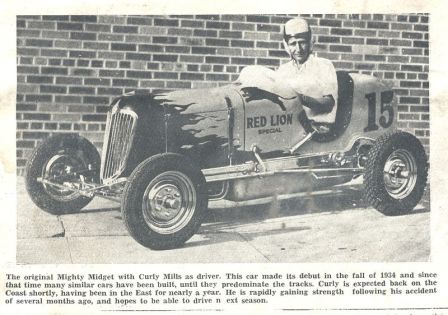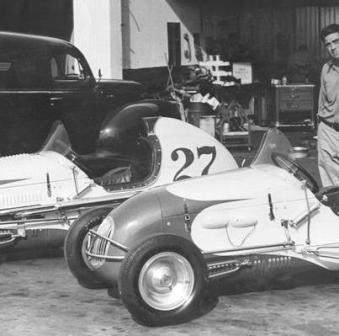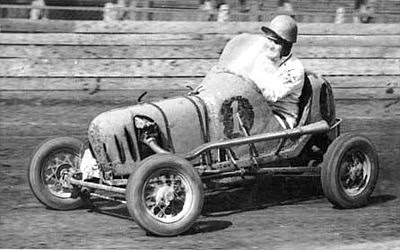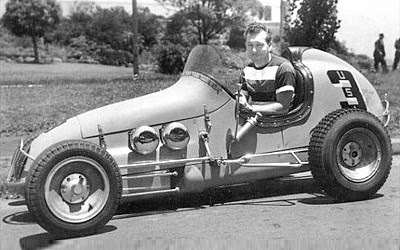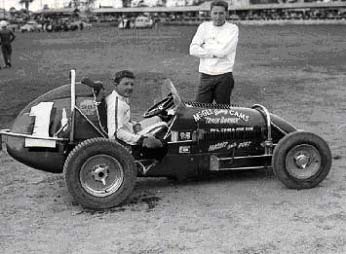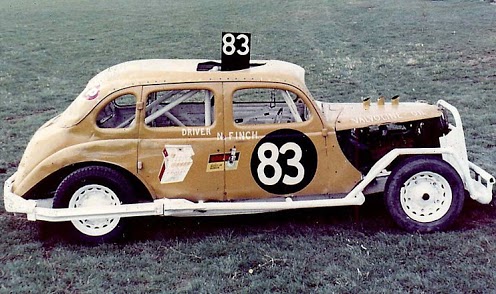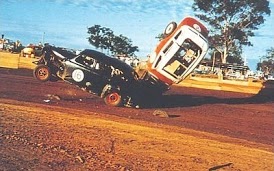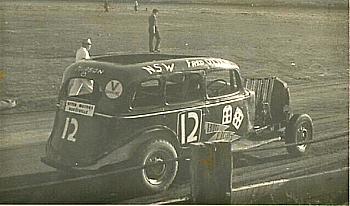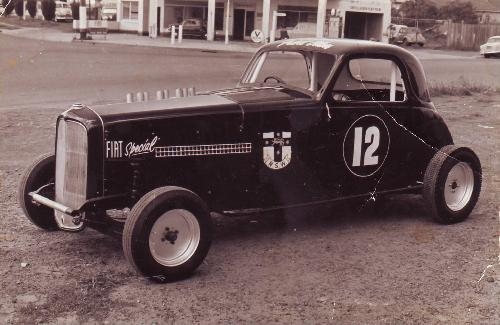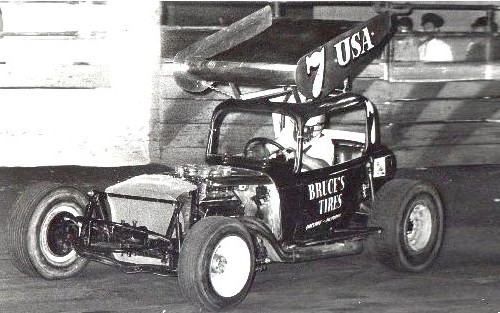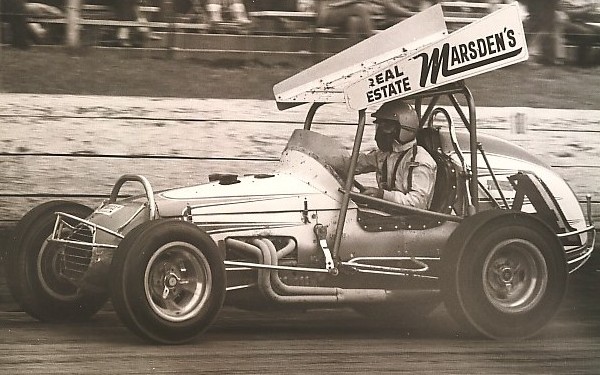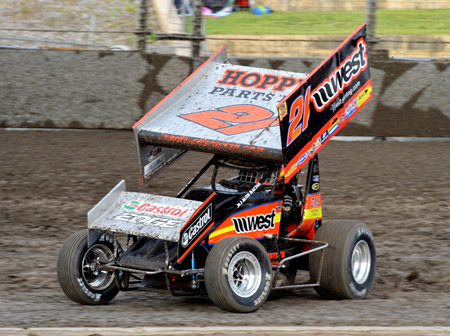As the Memorial Day Week end approaches and the world’s press focus on the famous Indianapolis 500, race fans should stop for a moment and remember back to Memorial Day 1983 when the original Outlaw Garry Patterson lost his life in a frightening accident during the final at Calistoga Speedway.
There have been many words written about Garry Patterson and his amazing racing career., but Garry was a man of few words, on the race track his driving did his talking .The hostile Hippie, the Preacher or the Dancing Phantom however you like to refer to him, Patterson was a rare breed, his own man who stood his ground no matter the circumstance.
In the early 1950s a young and brash racer with confidence to burn came out of Hells Canyon Oregon and would start a racing career that those of us fortunate enough to have witnessed would never forget.
During his visits down under Australian Speedway fans were introduced to possibly the most exciting racer ever to hit our dirt tracks. No matter where he raced he never left anything behind it was full on every race.
Garry Patterson, a radial character, enemy to most race stewards feared and respected by all his competitors and he always left the crowd divided in their loyalty.
The Garry Patterson signature will never be erased from Speedway history and when you feel a little agro at the Speedway next , be careful the Preacher might well be looking down on you, Peace Man!
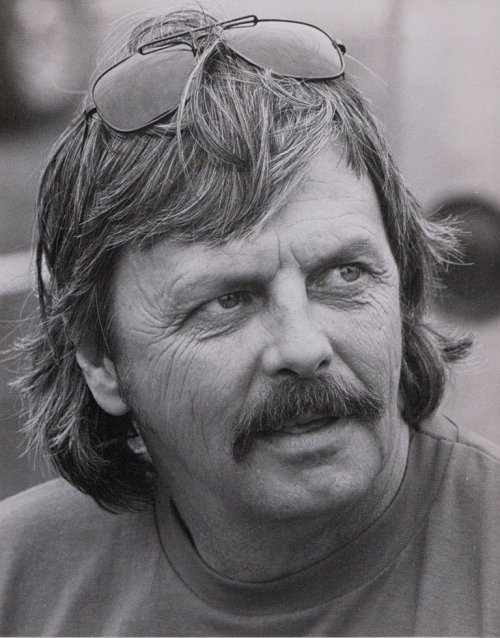 The Garry Patterson motto,”On the seventh day god created the dirt track and run what you brung.
The Garry Patterson motto,”On the seventh day god created the dirt track and run what you brung.
Sydney Speedway Saturday night April 27 and VintagesSpeedcar Owners displayed some of their cars from yesterday . Memories from the Sydney Showground and Liverpool Speedcar came flooding back as I walked about the display .
Wandering back from the pits i passed this guy and had a quick chat
.
Not so scarey these days but during his Speedcar career he was ” Scarem ‘ Sid Middlemiss driver of the 54 car for Buckel Autos . Sid was driving the old girl on track as the Speedcars headed out before the start of the 50 lap Classic
From Liverpool Speedway this is the view most had of Barry Pinchback’s car
.Another from the past the Alan Day owned Volvo
Remember all these and many more from the Speedway past will be headed to Goulbirn Speedway for the international Vintage Speedway over the week end of may 17,18 and 19 . In the words of Mike Raymond “Be There ”
The Speedway Engines – Way back then
In 1933 Midget Speedcars first caught the imagination of young men throughout the US and gradually blossomed shortly after the end of WW11.
Car racing was growing at a fast pace, those day entertainment was limited. Enterprising young men and even at that early stage surely a women was in the picture somewhere ,looked for suitable power plants to power these gleaming little homemade racers .
Racing on tracks bulldozed from corn fields the small racers soon started to build eager crowds wanting to see these flash looking little rockets race on small tracks where spectators were ringside.
For almost two decades they races in football stadiums, fairgrounds 5 nights a week and twice on Saturday and Sunday, such was the demand.
Cash was real short in the period around the big depression so if you wanted to race you were going to become an innovator. The race sanction groups of the time agreed on an engine size between 100 and 142 cubic inches, but in those days very few cars had suitable engines.
1934 saw most midgets being powered by outboard engine and these were very powerful but the down side was the noise, very loud. Motor Cycle engines were also starting to become popular.
Race crowds normally would top 18,000 spectators all paying 0.50cents admissions and expecting continuous hair raising racing and despite the efforts by the teams the standard of the cars was at best questionable.
Regular break downs, engines that would not fire and to add more discomfort to the huge crowds the smoke particularly during indoor racing was fast becoming a concern for the pioneering promoter
Legendary Los Angles promoter Earle Gilmore was becoming frustrated with the performance of the cars, a meeting with noted engineers of the day Leo Goosen and Fred Offenhauser was arranged with the aim to develop a purpose built speedway engine. The result was a 95cubic inch engine based on half of the already famous Miller Indy Engine. The Offenhauser legend had begun.
The specifications for the first Offenhauser Engine:
Tech Specs at a Glance
1933 – 255 Original Offenhauser 4 cyl twin cam
- Bore: 4.250”
- Stroke: 4.50”
- CID: 255.38
- C/R: 10:1
- Weight: 325 lbs.
- HP: 250 @ 5,200 rpm
- Insert picture of the first Offy
The Offy was dynamic straight out of the shop and dominated race meeting first on the West Coast then across the country, almost everywhere it ran. The competition was still the outboard Evinrud EltoThe first Offy powered car was driven by Curley Mills and he won 16 features in 1934, Curley died on Christmas Eve 1935 from race injuries
`For many racing seasons the Offy had very little competition but drivers like Ray Stauffer using all their guile, courage and skill matched it with the Offy. For many racers the cost of an Offy engine was out of reach so in 1937 The Ford Motor Company came to their rescue when they released a passenger vehicle with small V8 136 cubic inch 60 horsepower flat head V8motor. The little Motor that could .This motor massed produced was the right weight and a perfect fit and could be tricked up with lots of special bits. Race cams cylinder heads and dual carburetor .The V860 was a strong fast engine that was perfectly suited to midget speedcar racing.
The V860 would be the first engine to question the supremacy of the Offy. The V860 powered the majority of midget in the 1940s and was the car to beat on the non Offy programs.
With the Offenhauser dominating many circuits unrest fostered in the ranks between the haves and the have –not’s. There were many that could not afford the purpose built racing engine and at the peak of the sports popularity there was room for the two racing decisions. One for Offys only and the other for non Offy engine cars
The development of the V860 must go to the engineering brilliance of Vic Eldbrock with the introduction of twin manifolds, special aluminum cylinder heads , pistons and lots more special bits.
As well as producing performance bits Vic also ran a race team and with Roger Ward was responsible for the first ever win over an Offy at the famous Gilmore Stadium. Vic helped the performance along a touch by adding nitro methane to the fuel in the number 27 Red and White car much to the delight of the screaming fans
Back in Australia there was a similar story .December 15 1934 saw the first midget speedcar race at Melbourne’s Olympic Park. Racing started in New Zealand in 1937.
A variety of engines were used, Jeep , Ford Model A ,Studebaker , motor Cycle engines any type of engine provided it would fit and fell within the regulations of the day.
Visitor from America introduced the V860 and Offenhauser engines to our drivers who were developing their local engines with Twin Cylinder Vincent HRD Motor Cycle engines and of course our own Grey Holden and Falcon engines. The development of the Holden engine was remarkable, local engineers would develop it to a point where cars powered by Holden were able to win National titles from fields including some of the best Offenhauser equipment. Wins in match races against the Offy were achieved by many drivers.
The Repco Holden. Mackay Holden, McGee Trackburner and Tornado powered cars were bench marks in their times on Speedway in Australia. Another engineer was Merv Waggott. Cams by McGee and Waggott were the only cam shaft to have.
Hedley McGee was a rare and special race engineer who developed fuel injection for the Holden motor and his fuel injection systems were used all over the world . When the Yanks came to town with their Offys Hedley was the first choice to prepare their equipment. Tattersall, Warriner and all the Americans could be found at the Kings Cross work shop during their regular race visits.
McGee Cams still operates today from their base in the Canyon County, California. Sadly Hedley McGee passed away in 1984 and was added to the Speedway hall of Fame on June 16, 2007 at a function in Adelaide.
Rated the best ever match race ,it was a three lap between Bryan Cuneen in the Yellow 55 Linklater prepared Holden and American Sherman Cleveland with the latest offy power ,as close as you would ever want to race , no fear , no quarter a mighty Holden win over the Offenhauser.
Repco Holden, McGee Cams Holden and MacKay Holden’s were the leaders, many local mechanics worked over their engines to achieve super performances.
In later years, the variety of engine being use grew with teams and drivers looking for that perfect balance between car and engine. Falcon engines were strong
National Champ of the time Johnnie Stewart tried a Coventry Climax motor in his Ron Hodson backed car., Volvo and Chevy 2, Scat and VW all had powerful reputations and gained important victories.
Today the engine war is just as strong with Esslinger the leading brands ahead of Gaerte, Fontana, Toyota , Ford , Mopar and Dodge and Chevrolet
Pictures from the Al Blix collection- Old Time Speedway Collection
In the early 1950s sedan cars on Speedway started to leave their footprint when we saw the introduction of Stock Car Racing . Sedans straight off the street or better direct from the wreckers yard. Cars were fitted with roll cages bars and all sorts of protective armour. and they needed all the protection they could weld on to the chassis. The main purpose was to roll, smash and put the opposition out of the race . Massive rollovers , huge crashes and wild spins made for out of this world crazy excitement .Changes had to be made if only for the safety of drivers and eventually we have the friendly fender benders of today.
Stock car racing saw the birth of legionary racing families .The Tatnall Family and the Braziers with Brooke and Garry among the best Sprint Car drivers in Australia today.
Stock Cars became Stock Rods and many years ago,too many to remember my brother and I entered our 1934 Ford Coupe for races at Westmead . Bright red number 31 with sponsorship from the Forest BP Service Station Arncliffe. The sponsorship was fuel, big deal to us and of course we had a Champion Spark Plug sticker on the car , yes we received our Spark Plugs., sort of cash for comment !
A very smart car with a locked diff and big winter tread tyres.and a good old Ford flat head V860 with Edelbrock heads., we were on the money. .
Racing at Westmead with the red 31 Ford in front, as it should be.
Things change quickly in motor sports and the favorite cars of the time were Fords and the old Hudson Terraplanes with their straight 8 .All the drivers young and old had the one goal, more speed and better handling . I remember Freddie Otten , hard charger in his Terraplane and it was a handful .
Fred in his quest for speed started to rebuild the old no 12 Terraplane in his fathers work shop in Hurstville. . Mr Otton was the Fiat dealer in Hurstville and with help from his hard working underpaid team,who got paid in those days anyway, created the Fiat Special and then dominated the shows at Westmead.. With the big straight 8 , light weight body it went like a rocket and to ever one’s surprise it went the way Fred pointed it, huge relief. .
A fantastic car even by today standards , classy .As the class become faster the desires of the racers for more speed continued . Strong influences from the US had a dramatic change and the era of the super modified started to emerge . Local rivers developed their own chassis and the choice of power moved from the flat heads and straight eight to the bigger , lighter and more powerful overhead cam Ford and Chev V8s..Visiting Americans like Marshall Sargent , Larry Burton and Garry Patterson brought monsters to race our boys.
From this point on the Super Modified car was being built across Australia with names like McCubbin , Britton and Warner . They raced at Tracey Speedway in Victoria, Rowley Park in Adelaide and both the Sydney and Brisbane showground Speedways.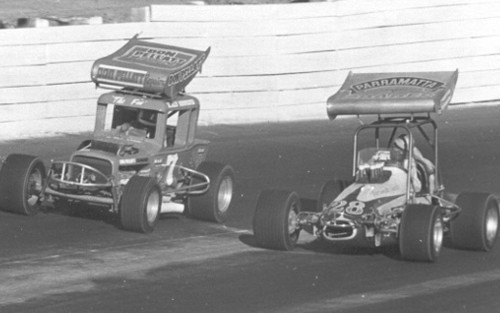
The early era of Sprint Cars had begun with Garry Rush taking the drive in the first sprinter to arrive in Australia the Johnnie Andersen car. The Master Blaster as he became known was an immediate success and the foundation for his fabulous career had been set..
While I remember with great fondness those early cars the thrill one gets from a Sprint Car event will make the hairs stand up on the back of your neck. The sight of 20 odd cars thundering down the straight into that first corner, drivers doing their best to tame these howling cars that are likely to step out or hit a rut at any time . You have gotta get to a Speedway now!
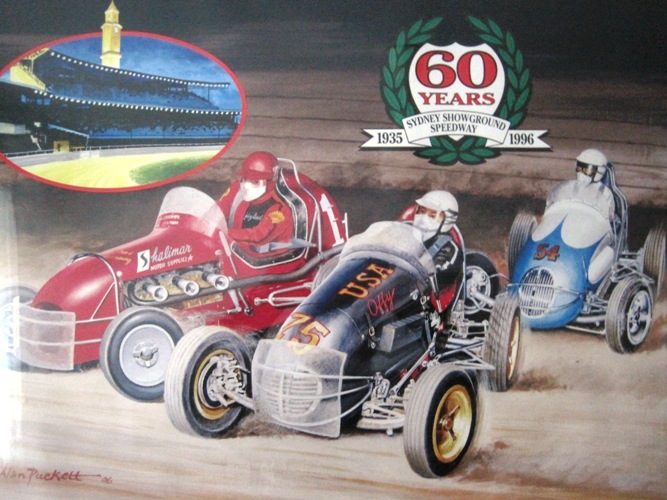
You just had to be there, the growling deep throaty sound of the Offenhauser’s. The dirt flying up over the fence and getting into your eyes and hair , and they are only on the introduction laps .
We would drive to the Speedway at the Royal , Sydney Showground every Saturday night ,full of youthful enthusiasm ready for another night of Speed Car action hoping our favorite driver would blow away the field . The action would never stop and when ever the Yanks were in town the locals headed by Johnnie Stewart , Jeff Freeman found the loudest pedal to challenge and head the Yanks to the finishing line . .
There were many stars and every fan had their special driver , just like today. Many great American and New Zealand drivers toured Australia from the late 1930 and they continue to come down under.
While many of the touring Americans were at the height of their USAC careers there was no one that could match the performance on the Sydney Showground of Bob “Two Gun ” Tattersall. This was one mighty driver able to put his car in spaces that no other driver could or would even attempt . Inside or passes around the outside hard up on the fence .
Tatt’s was an expert race mechanic who knew how to tune his car and every one had a thumping sound ., he was the man to beat.
The picture above was painted by the late Alan Puckett to celebrate the end of an era . Alan passed away on the 9th October, 2009, after a short illness. He was 86 years old and painting right up to the final weeks. The photo is courtesy of Giles Puckett .
Alan Puckett Motoring Art worth a look a very talented man with a brush ,


